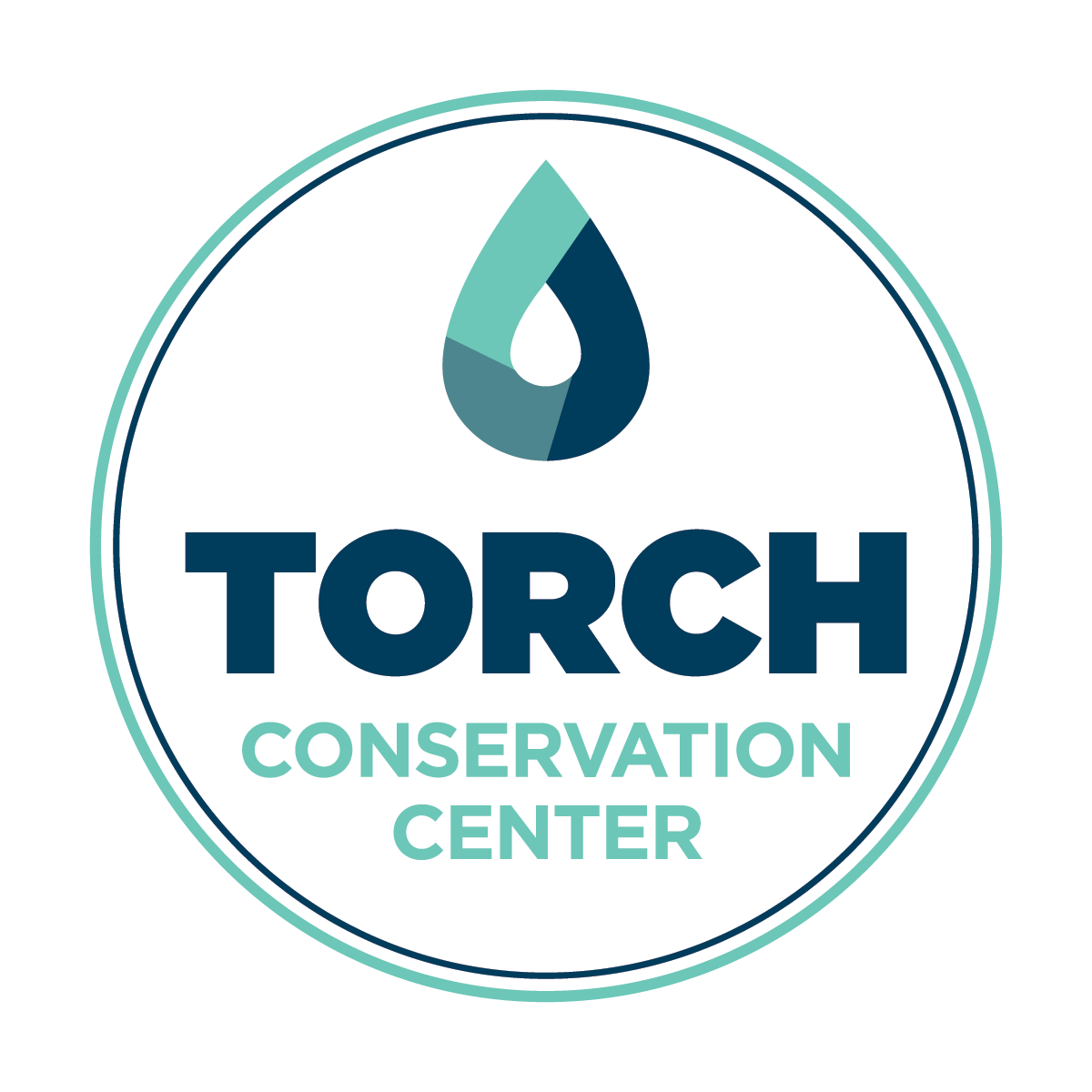TRUE Blue Landscaping
Restore Our Up North Landscape
How have people changed the Up North Landscape?
Torch Lake was surrounded by wetlands of white cedar swamp along 80% of her shore. Hillsides were covered with a northern hardwood forest.
Virgin forests of white pine, hemlock, beech and maple covered the upland ridges around the Torch Lake Watershed.
All these trees with their deep roots protected the water quality of Torch Lake by taking up nutrients and preventing erosion of sediment into her waters.
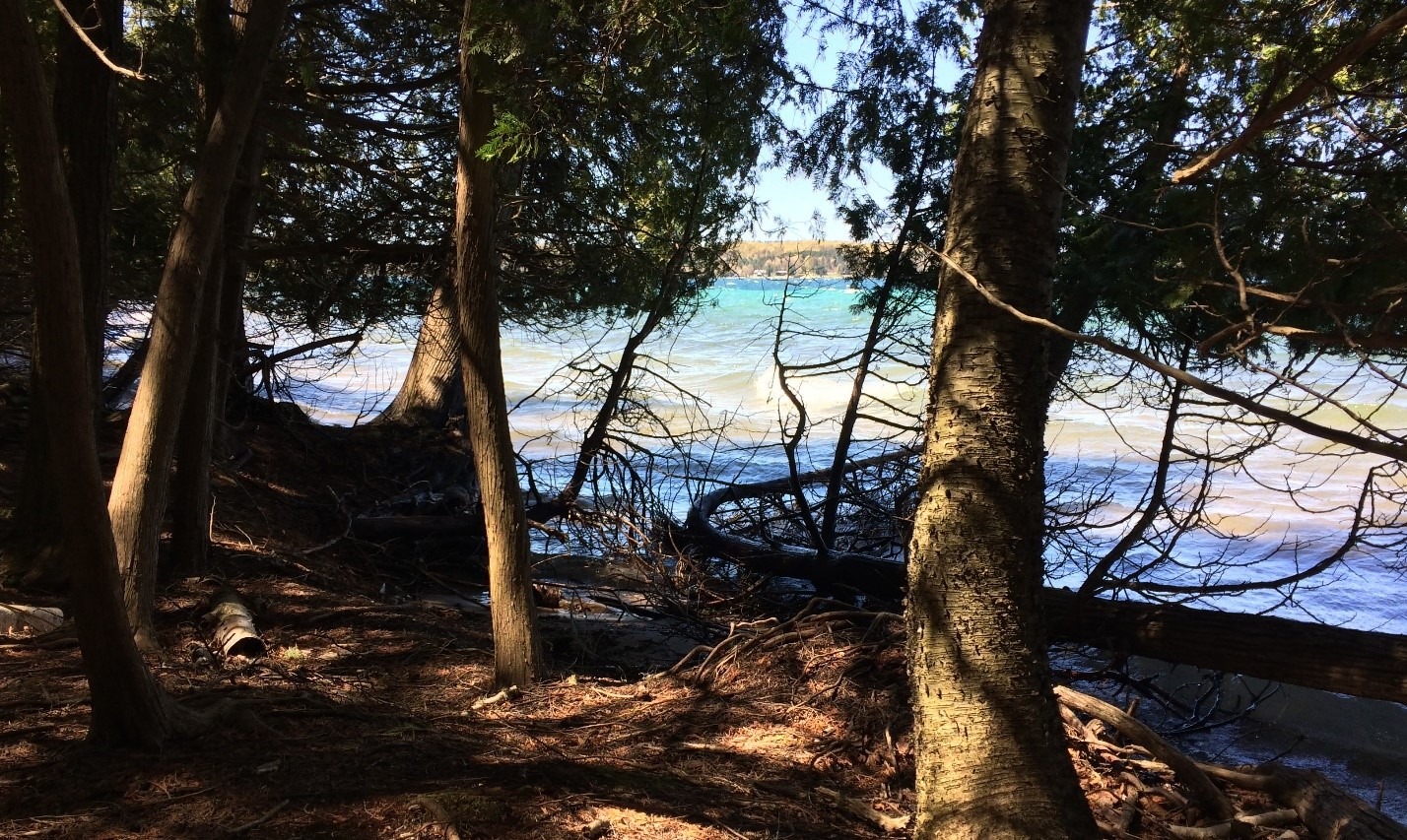
Remnant cedar swamp along Torch Lake Photo: Torch Conservation Center
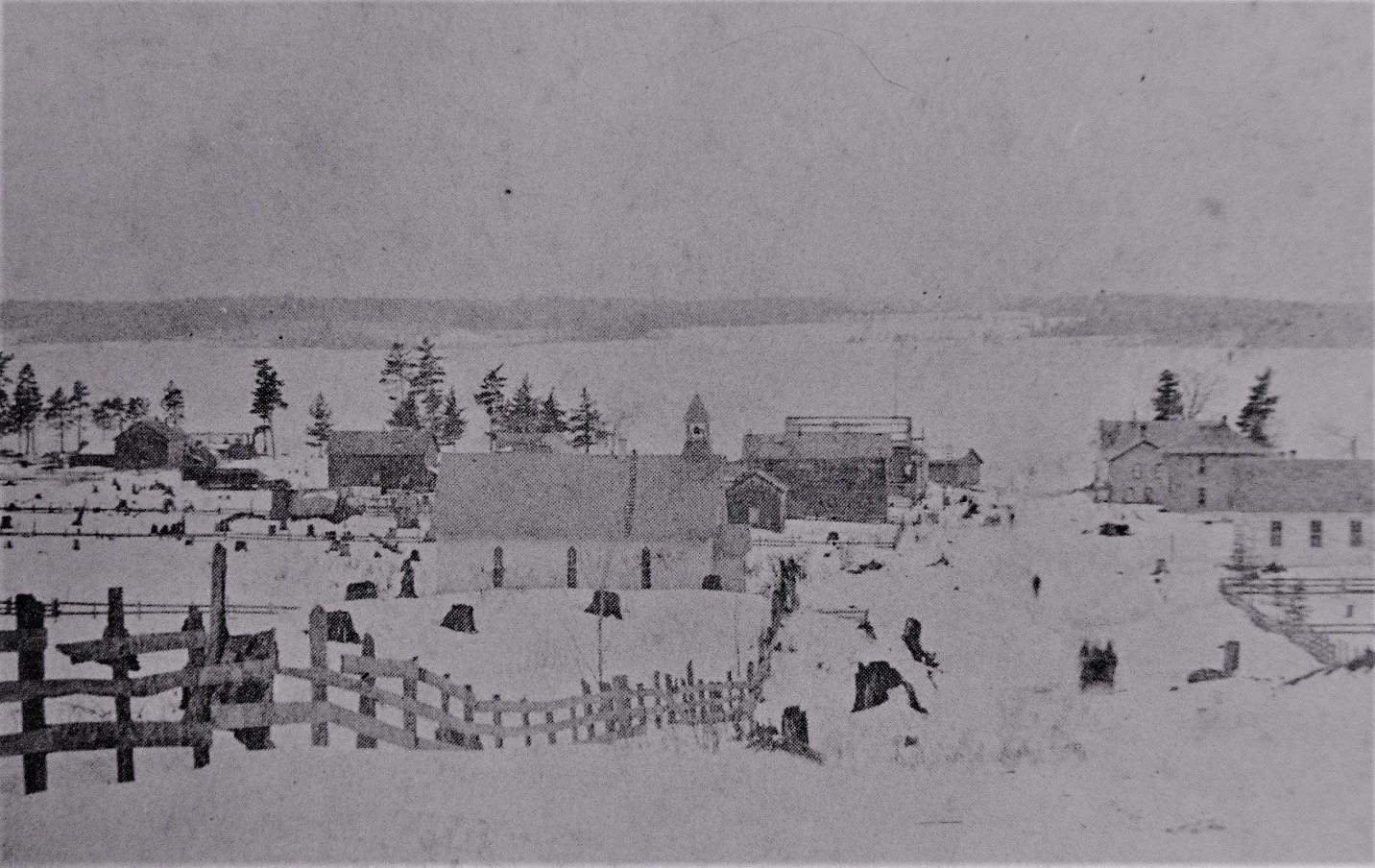
Stumps Covered with Snow in Antrim County Image: Private Collection of Barbara Lockrey
1880-1920 Michigan Logging Era
During the logging era, the watershed was cleared of trees.
Stormwater runoff carried the thin layer of topsoil (less than 1”) and sand into the lake. This sediment covered the gravel bottoms of trout streams feeding Torch Lake.
Farmers were encouraged to settle here. They used horses and oxen to remove stumps and rocks. Then they began working the land.
1920-1980 Recovery
State & federal conservation programs encouraged landowners to plant trees to stabilize steep slopes and stop erosion from stormwater runoff.
Most of the wetland forest was cut down and/or filled for construction of small cabins and cottages.
Hundreds of culverts were installed under driveways and private roads.
These changes allowed water and mucky soil to flow into the lake and its tributary streams.
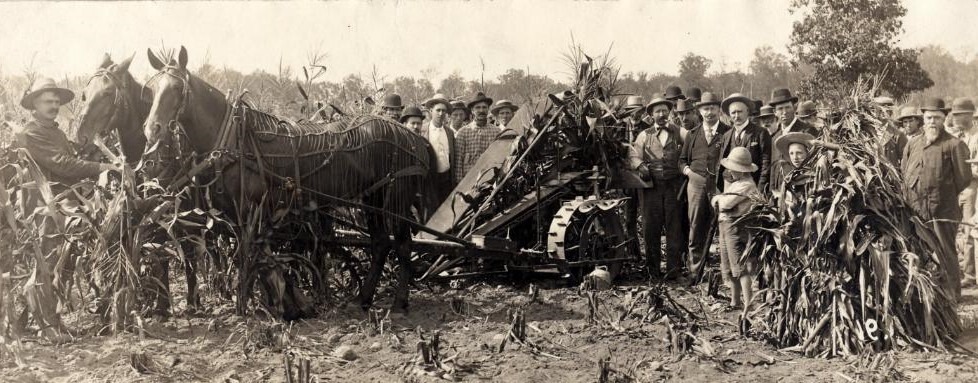
Farming on cleared land Image: Private Collection of Barbara Lockrey
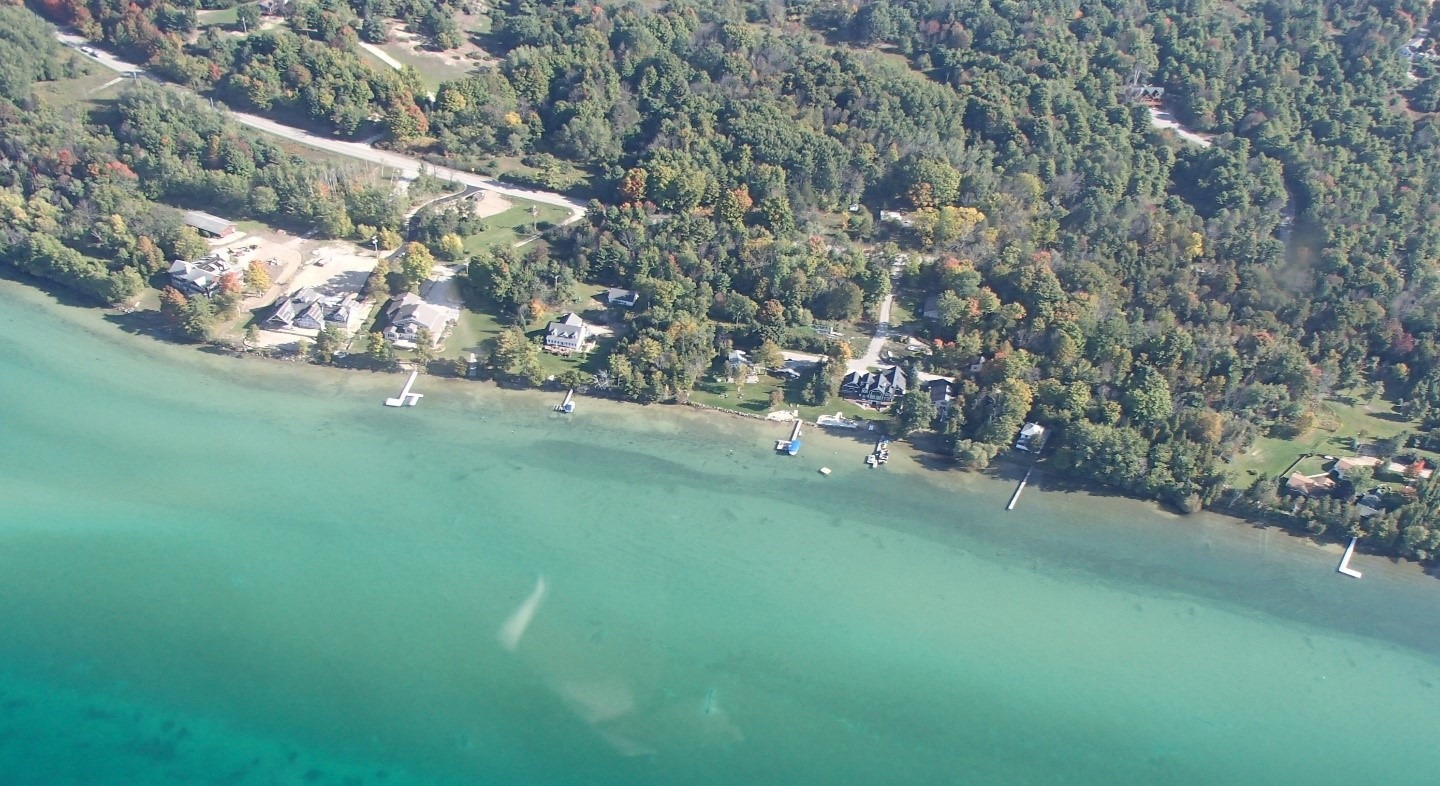
Torch Lake Watershed in 2008 Photo: Torch Conservation Center
1980- 2020 Development
The 45 miles shoreline of Torch Lake has changed drastically.
- Less than 1% of the wetlands remain.
- Less than 10 % of the shoreline remains in a natural condition. (Tip of the Mitt Watershed Council, 2017)
The watershed has changed, too.
- There are more than 4,000 homes in the Torch Lake Watershed and hundreds of miles of paved and gravel roads, as well as natural gas lines.
- More than 25 subdivisions are located on the ridge overlooking the lake.
- More than 100 active farms are operating.
- More than 100 small, family-owned businesses are located within the watershed.
2020- Future Conservation
By changing the land, we change the water quality of Torch Lake!
Our Choices Matter!
How do trees, shrubs and plants protect water quality in Torch Lake?
First and second growth trees with their deep roots protected the water quality of Torch Lake by taking up nutrients and preventing erosion of sediment into her waters.
When trees and native shrubs and plants are cleared and replaced with lawns or hard surfaces like roads, roofs and driveways, stormwater does not soak into the soil nor get taken up by deep root systems.
Instead, stormwater run-off flows across the developed property carrying sediment, excess manmade products such as fertilizers, pesticides and other toxic chemicals directly into the lake or into a ditch, then down the road and into the lake.
By adding trees, native shrubs and plants back into the Up North Landscape, the deep root protection system is returned and water quality is protected.
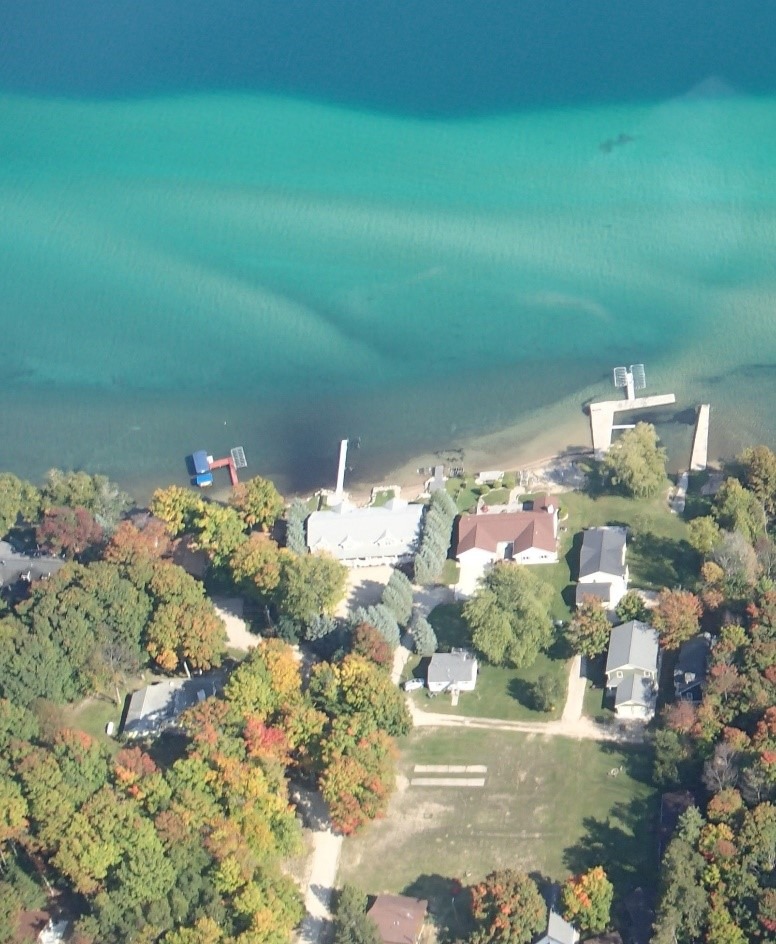
Torch Lake Watershed in 2008 Photo: Torch Conservation Center
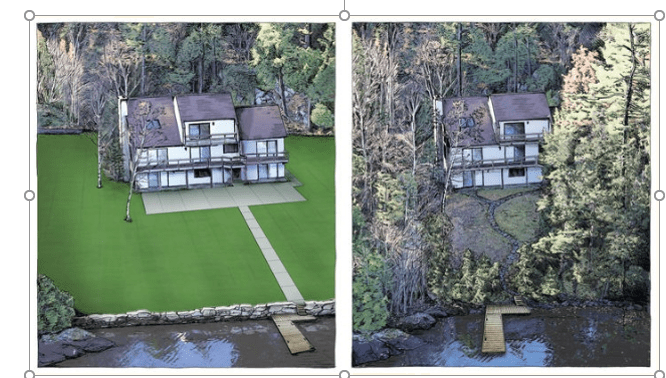
Suburban Landscape Up North Landscape
Image: Fund for Lake George
How can restoring our Up North Landscape benefit you and our water?
- Maintains your property values
- Helps to maintain high water quality in Torch Lake
- Reduces algae growth in Torch Lake
- Ensures that your family can enjoy Torch Lake for years to come
- Helps maintain high quality drinking water
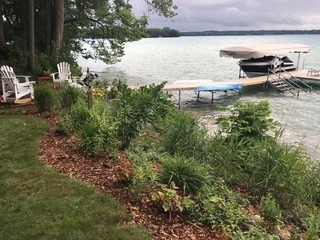
Buffer Garden of Native Plants Photo: Deanna Seifried
How can you restore our Up North Landscape?
There are many ways to maintain a plant buffer and start restoring the shoreline.
Step 1. Maintain a No-Mow Zone of at least 5’ between your lawn and the shore.
Letting deep rooted native grasses and flowering plants return will:
- Stabilize the shore preventing erosion
- Catch and filter water running off your property preventing excess nutrients and toxins from reaching the lake
Step 2. Install a buffer garden of native plants between your lawn and the shore.
Choose a design suitable for your type of shore— grassy, sandy, rocky or steep.
Step 3. Make your lawn smaller- an area for play, path and picnic.
Step 4. Replant trees on your property.
Step 5. Take the Shoreland Survey to see How well your Property Protects Torch Lake.
Don't just wish that Torch Lake will stay blue.
Choose a water-friendly lifestyle - make a difference!
About
Social
Subscribe to TRUE BLUE News
Follow us on Facebook
Share a favorite photo with us on Instagram (#truebluetorch)
